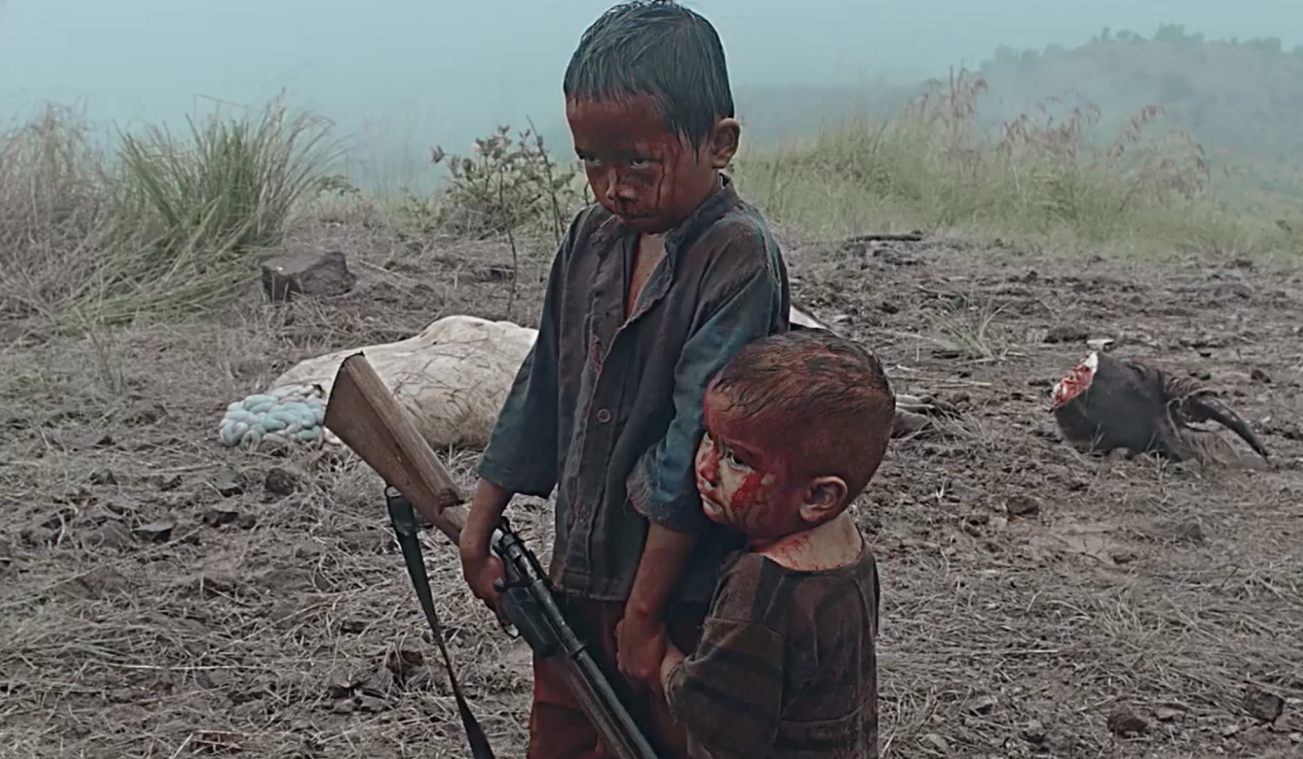
- Release date: October 20, 2017
- Director: Khavn de la Cruz
- Starring: Justine Samson, Pio Del Rio, Warren Tuaño
- Genre: Indie, Experimental
- Star rating: 9/10
“This is not a film by Khavn.”
Khavn de la Cruz, an odd but whimsical standout in the Filipino cinematic milieu, never understates that sentence with each piece he creates.
Redundant? Perhaps.
Ironic? Maybe.
But why the refusal to self-credit? To whom is the credit given? To Khavn, no man or woman behind the camera single-handedly controls the direction a film takes. It is most apparent in his full-length features like Balangiga: Howling Wilderness (2017), one of his Obra Maestra.
Many a few history dilettantes could identify the poignant significance of this quaint Visayan town the film’s title had referenced. It is the site of a fatal chapter in the Philippine-American War: the Balangiga Massacre. One might think that the film would delve into this sadly obscure part of the country’s history. Surprisingly yet curiously, the film takes a different direction. It veers away from the place of history and into the unknown and hidden depths of Samar Island’s tropical nature. Along the way is a mystical adventure that is enchanting yet perturbing.

And Khavn and company want you to come along in the journey, wherever they go and however they want you to see it through the power of its cinematography that blurs the line that partitions fantasy and reality to almost non-existence.
With the camera at his disposal, Albert Banzon lets you view the peculiarity, the isolation, and the fascination of Khavn’s worldbuilding through different lenses, be it through the eyes of a child, a ghost, or even an Omnipresent Being.
A variety of perspectives is necessary. When dealt with the vastness of a fictional 20th century Samar, one must look closer and farther to get the bigger picture. The result is an aesthetically hypnotic fodder that nourishes the cinephile’s soul. You can see it in the surrealism of a dream, the placidness of the rivers and forests, or the gruesome brutality of the surroundings.
But Balangiga is not all visual gratification. Blunt frankness is well- embedded throughout its almost 2-hour screen time. And a full embodiment of this honesty lies in the character of a Visayan youngling: Kulas (Justine Samson). Written on his face is a level of complexity rarely seen on the Filipino screen: a precocious demeanor bent on survival, a ferocity akin to a pride of lions mixed with a child-like sense of isolation and vulnerability. And the most apparent irony of them all: those make him more human in contrast to the humankind that has regressed to animal-like instincts. It is petrifying to witness the clear-cut differences, indeed!
But as the film ends, audiences may feel perplexed by its unorthodox style or unsatisfied with a movie that, at face value, makes no sense to them. A word of assistance for the confused: its aim as a piece of cinema is not to recount history. As cliched as it may sound, history is more than forming and rediscovering a narrative. It is also a process of reflecting and reimagining an experience.
Balangiga elucidates those thoughts on a certain point in history by putting oneself in someone else’s shoes and invigorating it with an assortment of emotions: remorse, wonder, pity, fear, and hatred.
Indeed, this is not a film by Khavn. It is a film by and for those souls lost first to bloodshed, then to time, distance, and change. Fortunately, the memory has not lost itself to the so-called howling wilderness. It is now relived and immortalized on the screen.

